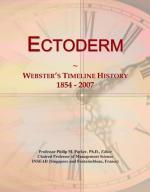|
This section contains 141 words (approx. 1 page at 300 words per page) |
Endoderm (also called entoderm) is one of the three original layers of tissue which appear during early formation of the embryo (the embryo is the offspring, developing within an egg, seed, or the body of its mother). The three layers of embryonic tissue are collectively referred to as germ tissue, meaning that they exist during the germination or developmental phase of an organism. These germ layers of tissue include an outer layer called ectoderm, a middle layer called mesoderm, and an inner layer called endoderm. Endoderm ultimately becomes the delicate lining (epithelium) of such structures as the pharynx, respiratory tract (excluding the nose), gastrointestinal tract (excluding the mouth and anus), bladder, and urethra. Furthermore, most of the glands associated with these structures are invested with endodermally-derived epithelium. These include the liver, pancreas, gall bladder, thyroid, parathyroid, and thymus glands.
|
This section contains 141 words (approx. 1 page at 300 words per page) |


